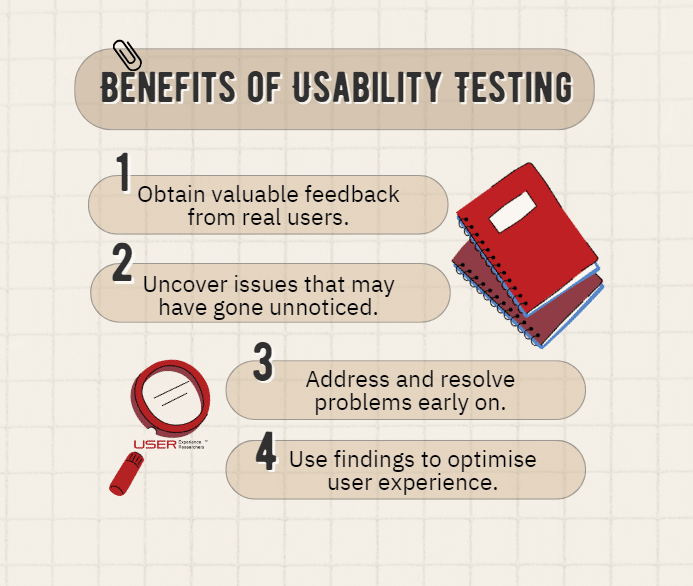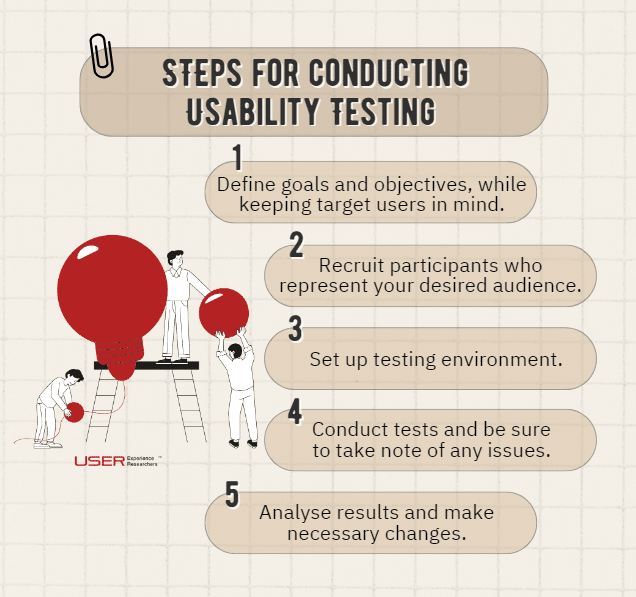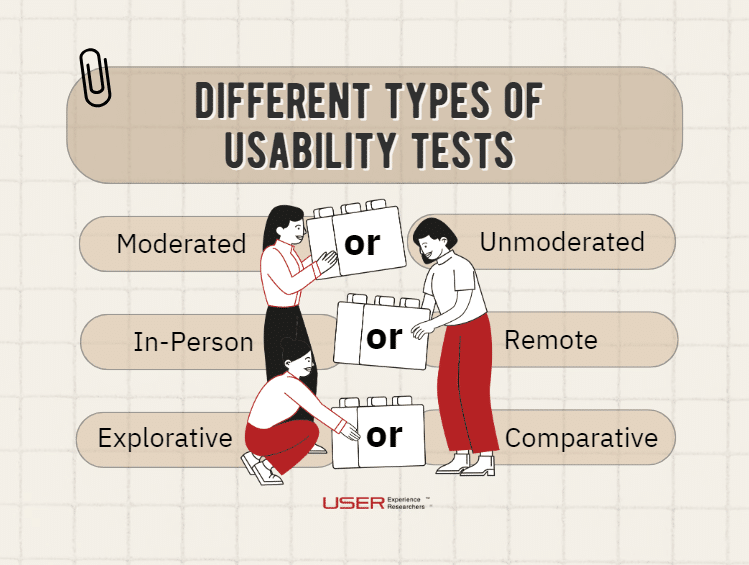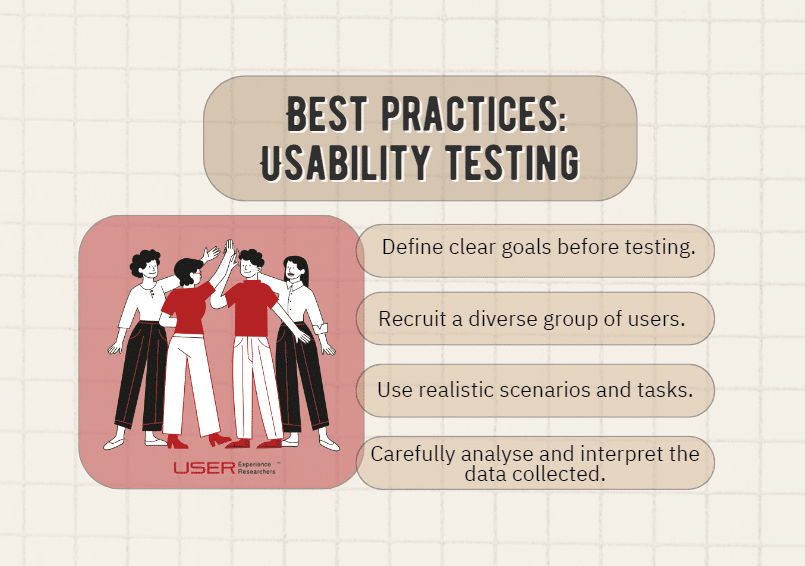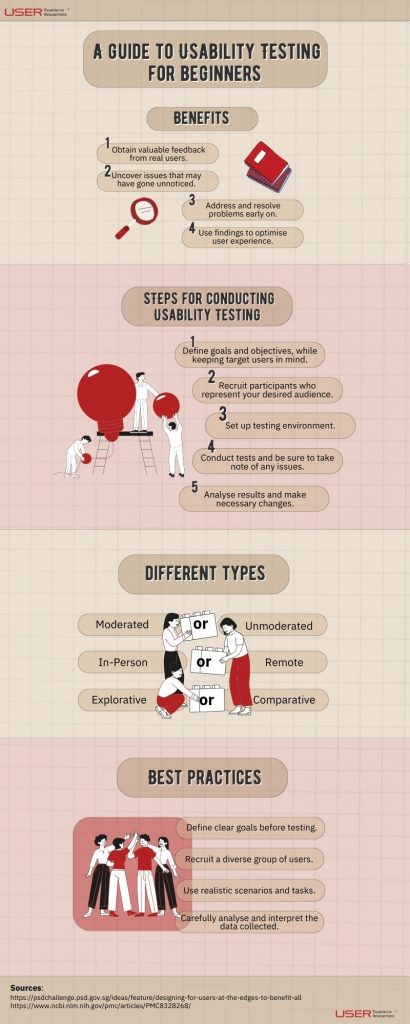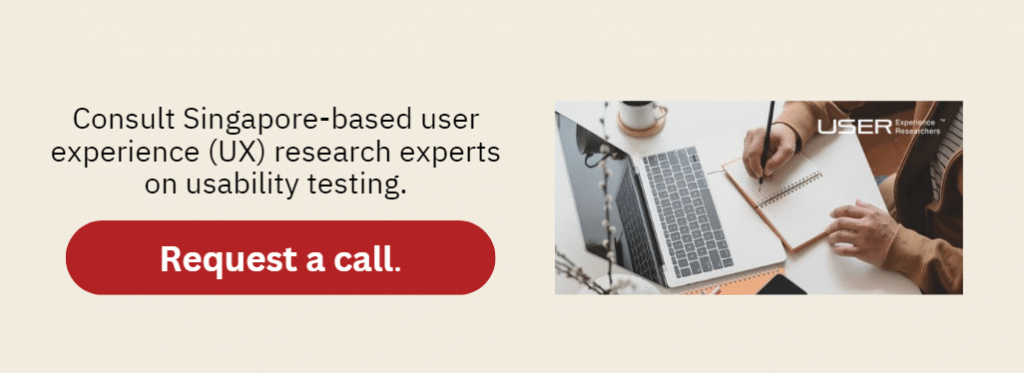Are you looking to improve your product’s user experience? Or do you find it difficult to obtain valuable insights into how you can serve your target consumers better?
Usability testing can provide answers. Finding out how real people would interact and respond to any web or app development project is crucial to assess its effectiveness.
In this post, we talk about the purpose of assessing usability, its benefits, the steps involved in the process, the different types of usability tests, and some best practice examples. Let’s begin this guide to usability testing for beginners.
Table of Contents
- Usability Testing and its Purpose
- Benefits of Testing Usability
- Steps for Conducting a Usability Test
- Different Types of Usability Tests and Their Benefits
- Examples of Actual Usability Testing
- Best Testing Practices to Ensure Effective Results
- How User Experience (UX) Researchers Can Help
What is Usability Testing?
Usability testing helps ensure that your product meets user needs. It’s a structured process that seeks to create seamless user experience. It gauges how usable or effective a product is by testing it with real people.
During usability testing sessions, participants are observed as they interact with or complete tasks using a product. The insights gathered are then used to guide designers and developers in producing web, app, or digital products that are enjoyable and helpful for users.
More Resources:
Basic Function of Usability Testing in UX Design
Usability Testing and Its Importance in User-Centered Design
Fundamental Differences Between Functional and Usability Testing
Benefits of Testing Usability
The importance of usability testing cannot be ignored in today’s digital age, where user experience is key to market dominance.
By conducting usability testing, companies can obtain valuable feedback on their website or app development from actual users. This information can then be used to improve and optimise the user experience, ultimately leading to increased user engagement.
The process can also uncover issues that may have gone unnoticed, such as confusing navigation or unclear instructions, allowing for these problems to be addressed and resolved.
To develop successful products, it’s critical to test how users find and respond to them. Investing in usability testing can benefit businesses in the long run by improving their product and creating a better user experience, in an iterative approach.
More Resources:
Why Usability Testing is So Important
Saving Lives through UX: Human Factors and Usability in Medical Devices
Top 3 Business Goals that Usability Testing Can Help You With
A Rising Need for Usability Testing and Efficient UX Design in Healthcare
The Increasing Demand for Healthcare Usability Testing
Steps for Conducting Usability Testing
- The first step in conducting a usability test is to define your goals and objectives, keeping in mind the product’s intended users.
- Next, you need to recruit participants who represent your target audience and set up a testing environment that mimics real-world use.
- Once you have your participants, you’ll need to conduct the tests, taking note of any issues or problems that arise.
- After the testing is complete, the results are analysed and necessary changes are made to the product to improve its usability. This process must be repeated several times to ensure that the product is optimised for users.
The testing isn’t a one-time endeavor, but it can save you from taxing design fixes. There are also options to complete it in the shortest time possible, which will be covered in the latter part of the post, so you can avoid delays and reduce overall costs.
More Resources:
How is Usability Testing Performed
Choosing a Telecommuting-friendly Usability Testing Method
Web Design Usability Testing Tools to Use
The Good and Bad of Remote Website Usability Testing
Different Types of Usability Tests
Moderated and Unmoderated
A moderated usability testing session is led by a moderator and can be done in-person or remotely. An in-person moderated test, on the other hand, is often held in a lab.
Moderators are experienced user researchers that guide participants and answer their questions. The advantage of moderated tests is that moderators get to observe and interact with the respondents closely, allowing them to effectively take note of facial expressions, reactions, and body movements. They can also immediately use probing, supplementary questions to take the discussion further.
Umoderated testing, on the other hand, doesn’t require moderators. Participants are free to take the test anytime and anywhere they prefer. The questions are prepared for them and, often, online tools are used for the sessions. The respondents aren’t guided, and they can complete the test at their own pace.The good thing about unmoderated usability tests is that they usually cost less and involve fewer people to organise.
In-Person or Remote
In-person tests are conducted face-to-face. They provide deeper insights as researchers are in the same room as the respondents. They can catch and analyse the reactions of the respondents closely. However, this testing approach also requires more tools to be conducted. A lab or a testing area may need to be booked to ensure that the space is conducive for focused discussions.
Remote tests, on the other hand, are done online. Booking a lab isn’t always necessary and it lets you recruit as many participants as possible from different locations. However, the findings are limited as there’s no direct interaction between the UX researchers and the respondents.
Explorative and Comparative
If you’re in the early stages of product development, explorative usability tests can be beneficial. This testing format consists of open-ended questions and the number of respondents doesn’t have to be a lot.
Researchers ask participants about their thoughts and impressions toward products. Afterward, they gather the data to find out which aspects of a product work and don’t work for the users and if there’s anything that can still be enhanced.
Meanwhile, if you have two product designs and would like to find out which is more effective, a comparative test can be more suitable.
The session involves having respondents compare the designs to identify which has better UX design. This testing method can also be used to compare a product with its competitors. Comparative usability testing often requires a larger number of participants.
Examples of Usability Tests
Usability testing is an integral part of any product development process. It involves testing how easy and convenient it is to use a product or service. And to prove how important usability testing is, let’s take a look at two examples of actual usability tests and user research.
1. Making Singpass more inclusive and empowering for its users
Singpass is a national identity system and gateway to digital services offered by over 400 public and private organisations. It was updated in response to the COVID-19 pandemic, and to include more features to make it more user-friendly and easily accessible for all.
The team behind the project conducted user research and usability testing to better understand users’ needs. They began their study by involving people at the edges, such as the visually impaired.
During interactions with users, the team felt even more inspired to enhance the app, and offer its users a sense of independence and accomplishment with every completed task. Read more.
2. Enhancing quality of life for caregivers in Singapore through a mobile app
As the population ages and the number of those dealing with chronic diseases increases, the need for caregivers also rises. However, support provided to the caregiving community from healthcare organisations is often limited to in-person activities.
The Caregivers’ Circle, a community network app, sought to change that. Researchers surveyed caregivers within Singapore to identify their needs and gaps in the existing support networks. They used their findings to improve the app, and, as a result, caregivers liked the app’s new features and how it made their daily activities easier. Read more.
On the other hand, here’s a case where usability testing could have helped save lives: Saving Lives through UX: Human Factors and Usability in Medical Devices .
Best Practices to Ensure Effective Results from Usability Testing
In testing how usable products are, there are certain best practices that can help ensure effective results.
One key practice is to clearly define the goals and objectives of the testing beforehand. This allows for more focused and targeted testing, which ultimately reduces time and costs.
Another is to recruit a diverse group of users to help identify any potential issues or biases that could be overlooked otherwise.
It’s also important to use realistic scenarios and tasks, as this can help simulate real-world usage and provide more accurate results.
Lastly, it’s essential to carefully analyse and interpret the data collected during testing, and use it to improve the design and overall user experience.
By following these usability testing best practices, organisations can effectively improve user satisfaction and drive business success.
More Resources:
Web Design Usability Testing Tools to Use
The Good and Bad of Remote Website Usability Testing
How User Experience (UX) Researchers Can Help
Hiring a user experience (UX) consulting agency in Singapore can be a transformative decision for your product’s success.
These specialised agencies bring onboard an array of expertise, such as understanding local user behavior, cultural nuances, and market trends. They have the ability to design intuitive and user-centric interfaces, which drastically enhances customer satisfaction and user engagement.
Leveraging their in-depth knowledge of usability testing, they can ensure that your product is fine-tuned to suit the end-user’s needs, avoiding costly redesigns post-launch.
Furthermore, their familiarity with Singapore’s digital landscape can help your product stand out amidst the competition. Thus, engaging a UX consulting agency in Singapore can be an asset in your product development journey, ensuring a superior and localised user experience. This is also one effective way to organise and complete testing sessions much faster and more cost-effectively.
To recap
Usability testing helps ensure you’re creating an intuitive and useful experience for users, so they can achieve their goals within the application. It involves observing people as they use a prototype of your product/web page, testing user flows and measuring task completion times.
Various types of usability tests can be adapted to the needs of each client, such as A/B testing, expert reviews and surveys. Good planning and implementation of these tests can guarantee effective results by eliminating friction from the user journey and achieving a positive experience with your app or website.
Finally, by understanding the best practices needed for successful usability testing, your product will be all set to enter and thrive in the competitive market!
This guide into usability testing for beginners contains basic information on this valuable UX research method. But if you’re unsure how to get started, consider consulting user experience (UX) experts. It could be your best first step in developing a high-quality product that resonates with users.

